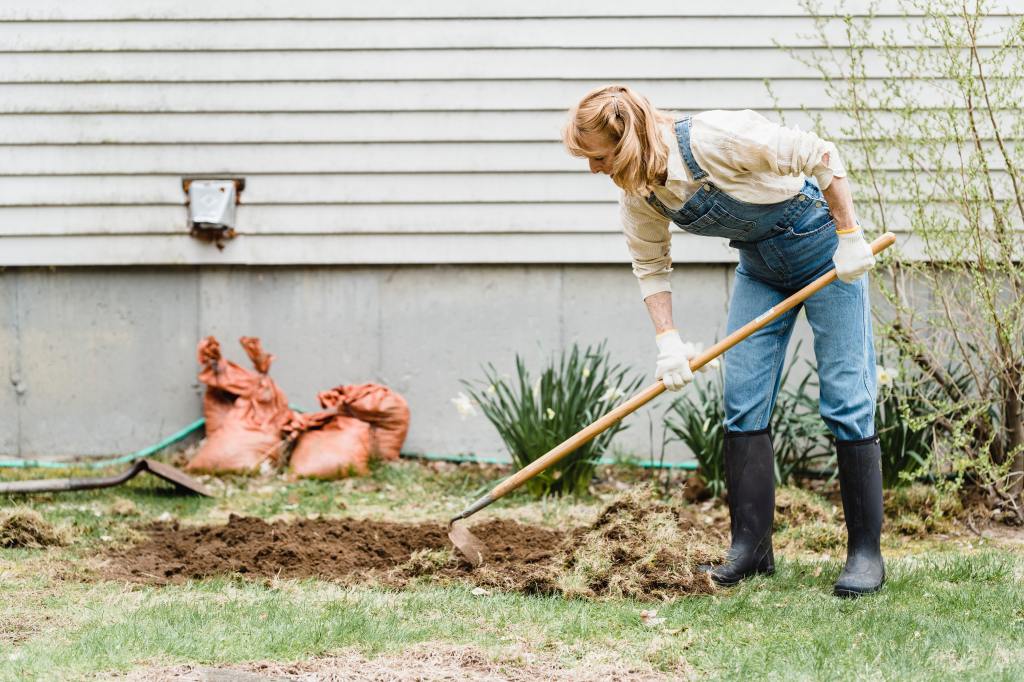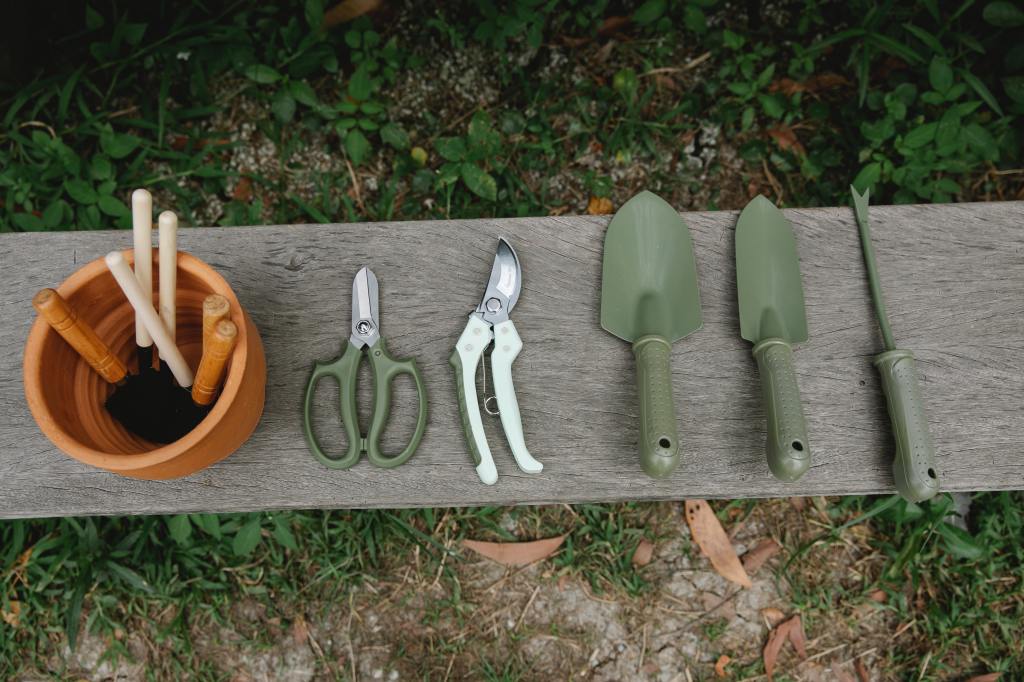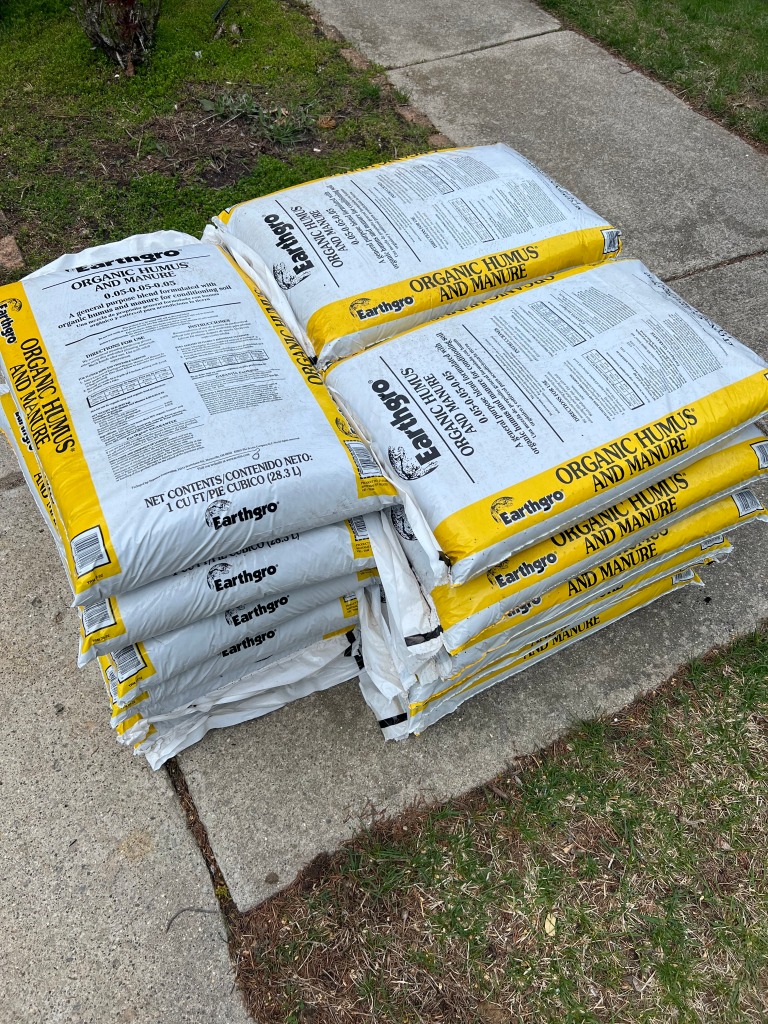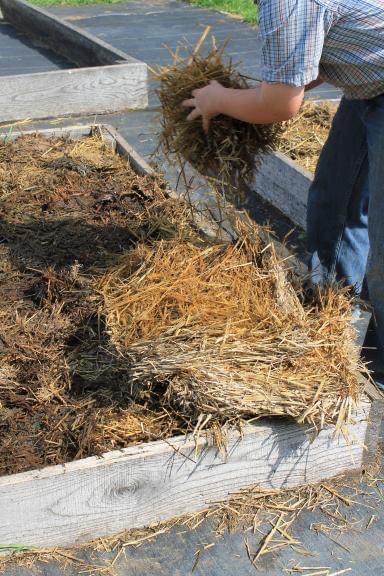
Introduction to February Garden Chores
Old man winter is still in full force here in Michigan… I dread each day there is snow on the ground. As I look outside to my beautiful garden, I long for the time I can get out there and play in the dirt. Although I will be starting some of my tomato, pepper, eggplant, and a few other seeds here very soon. My heart does that pitter-patter thing as I thing about it.
But all too soon spring garden clean up will be at hand. Picking up all the debris that winter trudged in with it, and getting more dirt put into the raised beds. Now is the time to start thinking about those upcoming chores.
February may seem like a quiet month in the garden, but it is actually the perfect time to prepare for the upcoming spring season. As the winter begins to wane, we gardeners can take advantage of the milder weather and get a head start on their garden chores. In this comprehensive to-do list, I will guide you through the essential tasks that need to be tackled in February to ensure a successful and thriving garden later in the year.

Importance of Tackling Garden Chores in February
Many gardeners underestimate the importance of February garden chores. By taking the time to prepare your garden during this month, you set the stage for a bountiful harvest and healthy plants. One of the main reasons why February is crucial is because it allows you to get ahead of the game. By completing essential tasks now, you can avoid the rush and stress that often comes with spring gardening.
Another reason why February garden chores are essential is that they promote the overall health of your plants and soil. By properly pruning and trimming plants, you encourage strong growth and prevent diseases. Cleaning and organizing garden tools and equipment not only prolongs their lifespan but also ensures they are ready for use when you need them. By starting seeds indoors and transplanting and dividing plants, you give them a head start and increase your chances of success.

Preparing the Soil for Spring Planting
Before you can even think about planting new seeds or seedlings, it’s important to prepare your soil. February is the ideal time to perform soil tests to determine its pH level and nutrient content. Based on the results, you can then adjust the soil accordingly by adding organic matter, such as compost or well-rotted manure. This will improve the soil structure and provide essential nutrients for your plants.
Once the soil is ready, you can start preparing your garden beds. Remove any weeds or debris, and loosen the soil with a garden fork or tiller. It’s important to break up any compacted soil to allow for proper root growth. If you have heavy clay soil, consider adding sand or perlite to improve drainage. Conversely, if your soil is sandy, adding organic matter will help retain moisture.
Finally, consider adding a layer of mulch to your garden beds. This will help suppress weeds, retain moisture, and regulate soil temperature. Organic mulches, such as straw or wood chips, are excellent choices as they break down over time, adding valuable nutrients to the soil.
Pruning and Trimming Plants
Pruning and trimming plants is an essential task in February as it promotes healthier growth and maintains the desired shape of your plants. Start by removing any dead or diseased branches, as well as any crossing or rubbing branches that may hinder proper growth. Use clean and sharp pruning shears or loppers to make clean cuts just above a bud or lateral branch.

Join the list
Join hundreds of our subscribers and be the first to know about new content and special offers.
When it comes to deciduous plants, such as roses or fruit trees, February is the perfect time for more extensive pruning. Aim to remove about one-third of the plant’s overall growth, focusing on removing weak or crowded branches. This will stimulate new growth and improve the overall health and appearance of the plant.
However, it’s important to note that not all plants should be pruned in February. Some plants, such as spring-flowering shrubs, have already set their flower buds. Pruning them now would result in a loss of blooms. It’s best to research specific plants and their pruning requirements before taking any action.
Cleaning and Organizing Garden Tools and Equipment
As the saying goes, a clean garden is a happy garden. And the same can be said for your garden tools and equipment. February is the perfect time to give them some much-needed attention. Start by cleaning your tools to remove any dirt or debris that may have accumulated over time. Use a solution of warm water and mild dish soap to gently clean the surfaces. Dry them thoroughly to prevent rust.

Next, inspect your tools for any signs of damage or wear. Replace any broken or worn-out parts, such as handles or blades. Sharpen the blades of your pruning shears, loppers, and hedge trimmers to ensure clean and precise cuts. Lubricate any moving parts, such as pivot points or hinges, to keep them in good working order.
Organizing your garden tools and equipment is equally important. Consider investing in a sturdy tool rack or storage system that keeps everything in its place. This will not only save you time when you need a specific tool but also prolong the lifespan of your equipment.
Starting Seeds Indoors
For many gardeners, starting seeds indoors is an exciting and rewarding activity. It allows you to get a head start on the growing season and ensures a wider variety of plants in your garden. February is the perfect time to start seeds for cool-season vegetables, such as lettuce, spinach, and broccoli.
To get started, gather your supplies, including seed trays or pots, a high-quality seed starting mix, and a heat mat or grow lights if needed. Fill the trays or pots with the seed starting mix, moisten it, and sow the seeds according to the instructions on the seed packet. Cover the trays with a plastic dome or plastic wrap to create a greenhouse-like environment.
Place the trays in a warm location, such as near a south-facing window or on a heat mat. Keep the soil consistently moist but not waterlogged. As the seedlings emerge, remove the plastic cover and provide them with adequate light. Thin out the seedlings to prevent overcrowding and promote healthy growth.
Transplanting and Dividing Plants
February is also an excellent time to transplant and divide plants in your garden. Transplanting allows you to relocate plants to more suitable locations or create new garden beds. Dividing plants, on the other hand, helps rejuvenate overcrowded perennials and promotes stronger growth.

When transplanting or dividing plants, it’s important to choose a cloudy day or do it in the late afternoon to minimize stress on the plants. Dig a hole that is slightly larger than the root ball of the plant you are transplanting. Gently remove the plant from its current location, being careful not to damage the roots. Place it in the new hole and backfill with soil, firming it gently around the roots.
Dividing plants is done by carefully lifting the entire plant out of the ground and using a sharp knife or garden spade to separate it into smaller sections. Each section should have a healthy set of roots and several shoots or buds. Replant the divided sections in suitable locations, ensuring they are watered thoroughly.
Mulching and Protecting Plants from Frost
As February transitions into early spring, it’s important to protect your plants from any lingering frost. Mulching is an effective way to provide insulation and prevent damage to your plants. Apply a layer of organic mulch, such as straw or wood chips, around the base of your plants. This will help regulate soil temperature and protect the roots from extreme temperature fluctuations.
In addition to mulching, consider using frost blankets or row covers to protect more delicate plants. These lightweight fabrics allow air, light, and water to penetrate while providing a barrier against frost. Secure the covers tightly to prevent them from blowing away in strong winds.
It’s also important to monitor the weather forecast and be prepared to take additional measures if a severe frost is expected. In such cases, covering your plants with old sheets or blankets can provide extra protection. Just remember to remove the coverings once the danger of frost has passed to prevent overheating.
Planning and Designing Your Garden for the Upcoming Season
While February is a time of active gardening, it’s also an excellent opportunity to plan and design your garden for the upcoming season. Take the time to review your garden layout and determine any necessary changes or improvements. Consider factors such as sunlight exposure, soil conditions, and the overall aesthetic appeal.

Make a list of the plants you want to grow and research their specific requirements, such as sun or shade preferences, soil pH, and spacing. This will help you determine the best locations for each plant in your garden. Sketch out a garden plan, taking into account the height and spread of each plant.
Additionally, consider incorporating companion planting into your garden design. Certain plants have beneficial relationships when grown in close proximity, such as deterring pests or enhancing pollination. By strategically planting companion plants, you can create a more harmonious and productive garden.
Final Tips for Efficient Garden Chores in February

As February draws to a close, it’s important to reflect on the progress you’ve made in your garden and prepare for the coming spring season. By efficiently tackling your garden chores in February, you set the stage for a successful and thriving garden later in the year. Remember to:
- Prepare the soil for spring planting by conducting soil tests and adding organic matter.
- Prune and trim plants to promote healthier growth and maintain desired shapes.
- Clean and organize your garden tools and equipment to prolong their lifespan.
- Start seeds indoors for a head start on the growing season.
- Transplant and divide plants to create new garden beds and rejuvenate perennials.
- Mulch and protect plants from frost using organic mulch and frost blankets.
- Plan and design your garden for the upcoming season, incorporating companion planting for added benefits.
By following these tips and staying on top of your garden chores in February, you’ll be well on your way to a beautiful and productive garden. Enjoy the process and the rewards it brings. Happy gardening!
CTA: Subscribe to our monthly gardening newsletter for more tips and advice on creating and maintaining a thriving garden throughout the year.
If you enjoyed this blog , please LIKE, Follow, Share & leave me a comment! I love your feedback!
If you aren’t following me on Facebook & Instagram, go on over & give a LIKE & Follow me for daily tips & tricks for your home & garden!
Remember to eat fresh, shop local, & have a happy day,
Jean
Copyright Policy
All text and images on this site are copyright of For Dragonflies And Me. Unless otherwise noted, you may not use this content
This post may contain affiliate links. If you choose to purchase through an affiliate link, I may receive a small commission at no additional cost to you. You can see my full disclaimer here.


